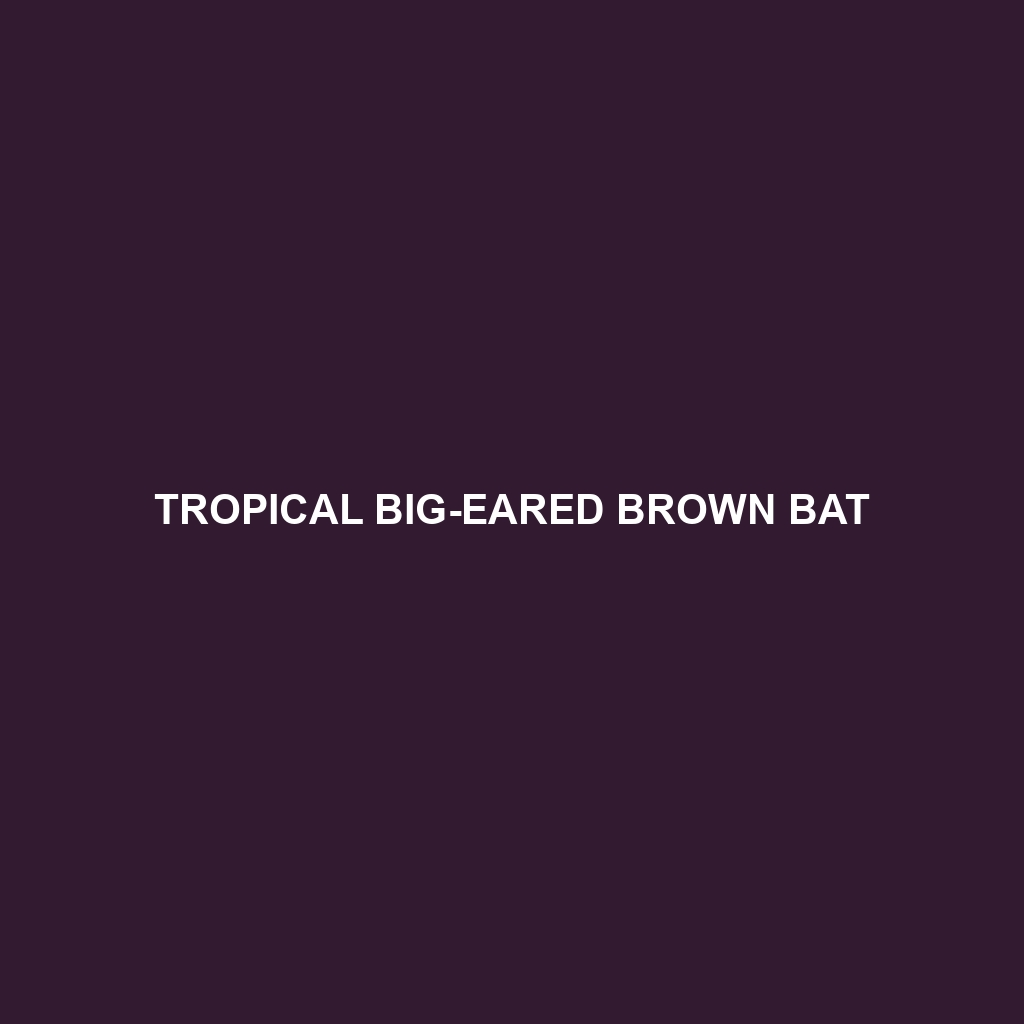Tropical Big-eared Brown Bat – Species Description
Common Name: Tropical Big-eared Brown Bat
Scientific Name:
Habitat
The Tropical Big-eared Brown Bat primarily inhabits tropical and subtropical regions of Central and South America. This species is often found in moist, dense forests, cave systems, and urban areas that provide suitable roosting environments. Notably, they prefer areas with high humidity and plenty of cover, allowing them to thrive away from adverse weather conditions.
Physical Characteristics
Tropical Big-eared Brown Bats are medium-sized bats, typically measuring between 9 to 12 centimeters in body length, with a wingspan of approximately 25 to 30 centimeters. Their fur is a distinctive dark brown color, often lighter on the underside. One of their most notable features is their exceptionally large ears, which can measure up to 4.5 centimeters long. These large ears aid in echolocation, making the bats adept hunters of nocturnal insects.
Behavior
These bats exhibit fascinating nocturnal behaviors, including foraging in the early evening and late-night hours. They use a unique form of echolocation to navigate and hunt for insects, which makes them highly efficient predators. During the day, Tropical Big-eared Brown Bats roost in tree hollows, caves, or man-made structures, typically in small groups. Their social behavior is intriguing, as they communicate using a series of high-pitched calls.
Diet
The diet of the Tropical Big-eared Brown Bat mainly consists of moths, beetles, and other flying insects. This bat plays a crucial role in controlling insect populations, thus maintaining the ecological balance in their habitats. During feeding, they often employ a ‘hawking’ technique, capturing insects mid-flight using their sharp agility and echolocation skills.
Reproduction
The breeding season for the Tropical Big-eared Brown Bat generally occurs during the warmer months, with females typically giving birth to one or two pups each year. Following a gestation period of about 45 to 50 days, the pups are born helpless and rely on their mothers for nourishment and protection. Mothers often form small maternity colonies, allowing for cooperative care of the young.
Conservation Status
The Tropical Big-eared Brown Bat is currently classified as vulnerable due to habitat loss and degradation, primarily caused by deforestation and urbanization. Conservation efforts are crucial to safeguard this species, emphasizing the need to protect their natural habitats and promote awareness about the ecological importance of bats.
Interesting Facts
One fascinating fact about the Tropical Big-eared Brown Bat is their ability to consume vast quantities of insects during a single night, sometimes eating up to 3,000 insects in just a few hours! This remarkable feeding habit not only supports their energy needs but also significantly benefits agriculture by reducing pest populations.
Role in Ecosystem
The Tropical Big-eared Brown Bat plays a vital role in its ecosystem as a natural pest controller. By feasting on insects, they contribute to maintaining the balance between various species, helping to promote healthy crops and reduce the reliance on chemical pesticides. Furthermore, they serve as prey for larger predators, thereby forming an integral part of the food web.
